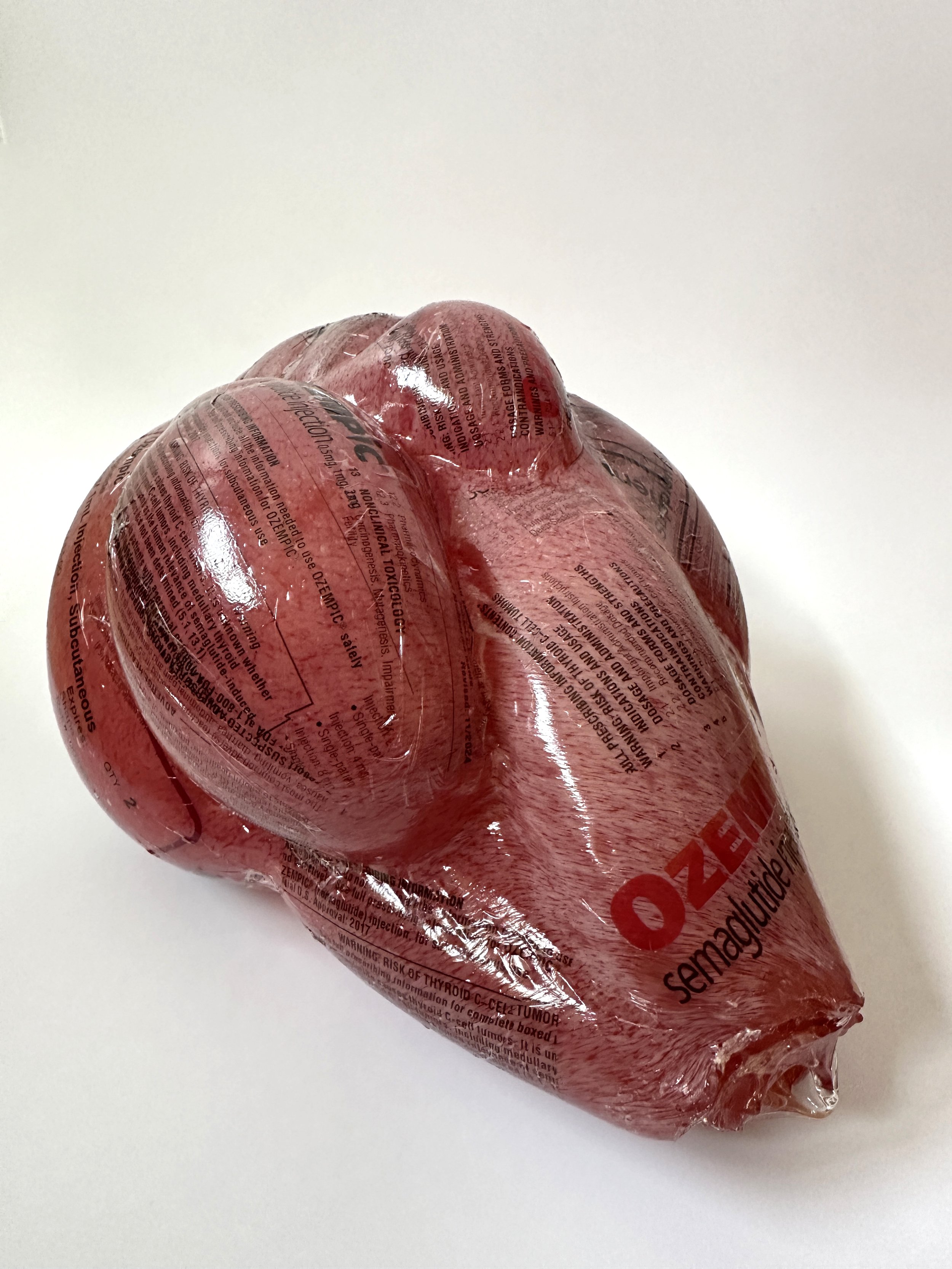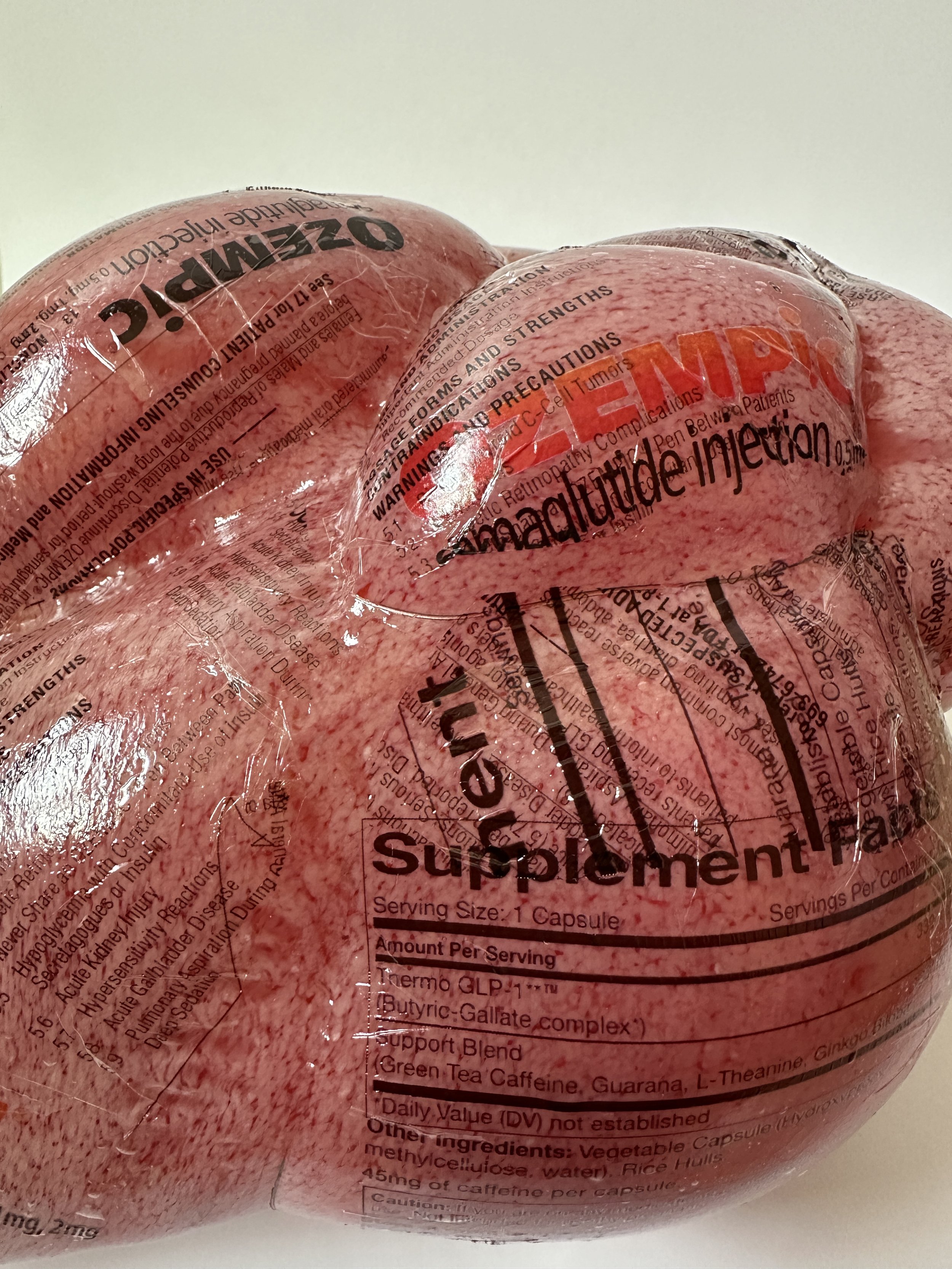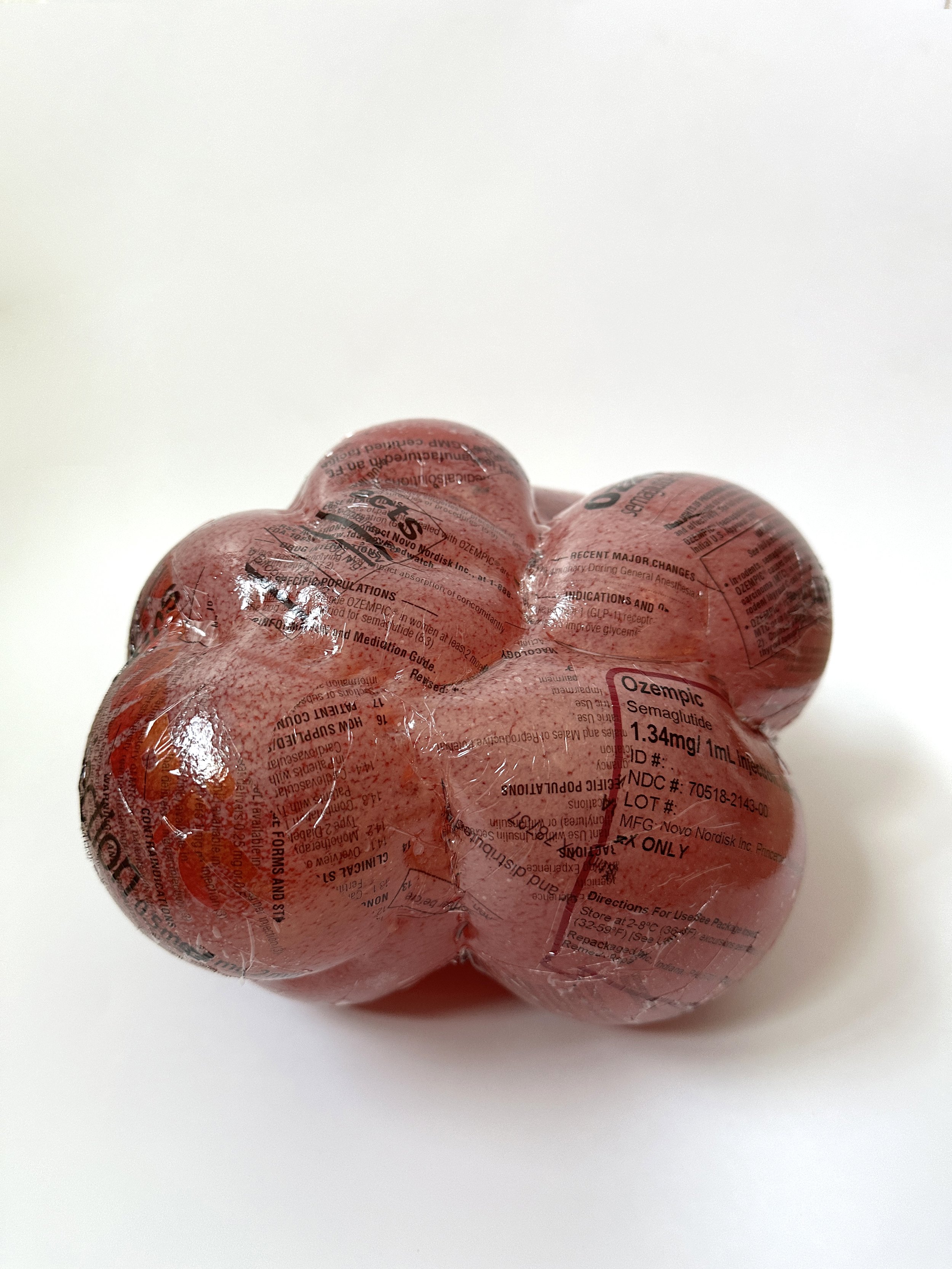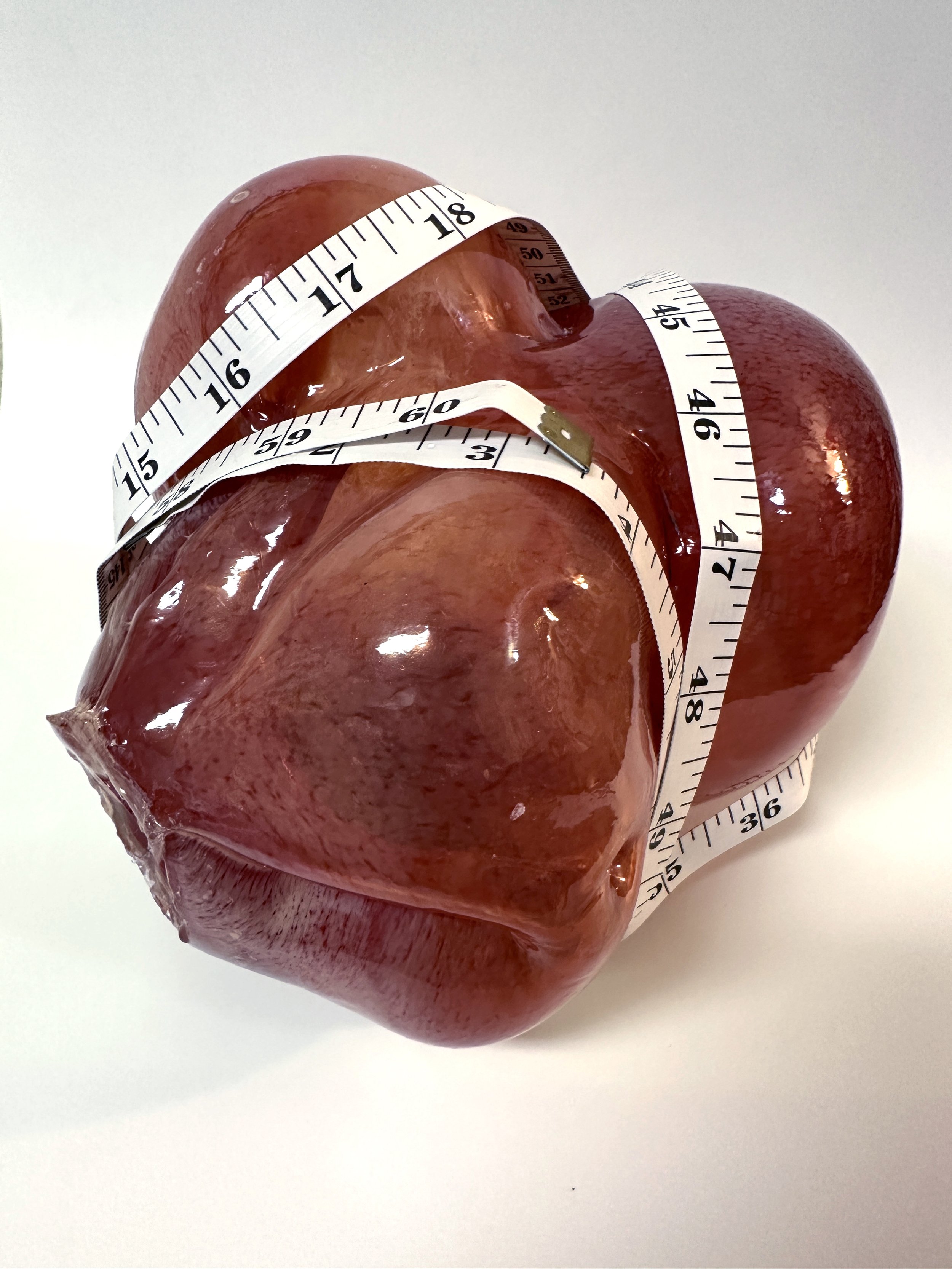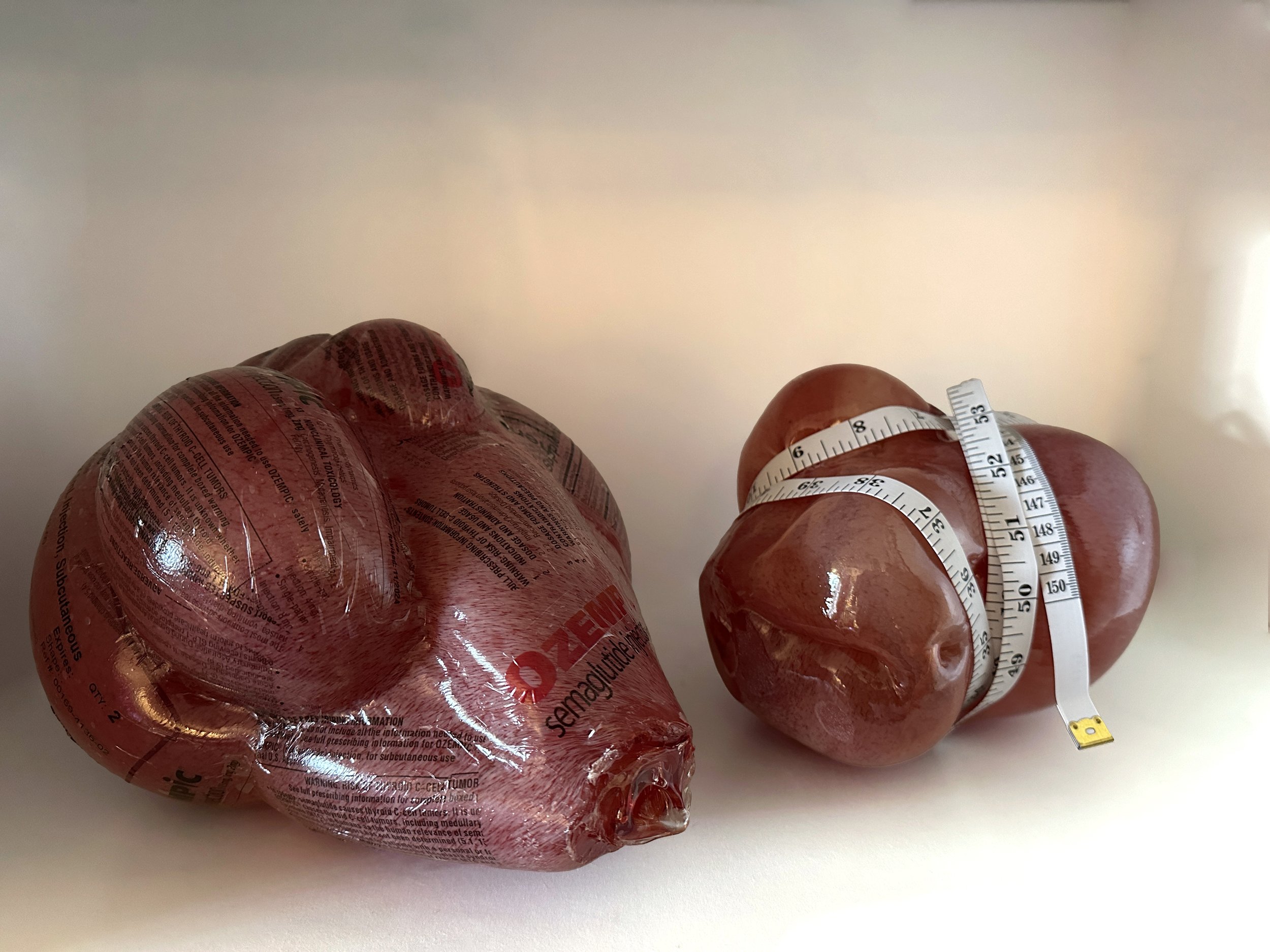Pound of Flesh
Pound of Flesh is a sculptural diptych made from hot-sculpted glass that explores the emotional and physical toll of fatphobia, the false promises of weight loss, and the medicalization and commodification of fat bodies. The two pieces resemble fleshy, skinless folds of fat and muscle—distorted, raw, and unsettling in their vulnerability. Their meat-like appearance evokes both the dehumanizing clinical gaze and the internalized belief that fatness is something grotesque to be trimmed, cut away, or hidden.
One of the forms is encased in the drug facts for Ozempic, a medication increasingly prescribed for weight loss, even among non-diabetics. The water slide decals cling to the surface of the sculpture in a way that mimics plastic wrap—wrinkled, slick, and slightly opaque. This treatment evokes the visual language of meat on display at the grocery store: neatly packaged, priced, and ready for consumption. This reference turns the body into product—something to be measured, evaluated, bought, sold, and altered. It speaks to the cultural obsession with weight loss, where fat bodies are not seen as people, but as problems to be fixed, marketed to, and made more palatable.
The second sculpture is tightly bound in fabric measuring tape, a futile and constrictive gesture that recalls the ritual of dieting, of squeezing, of trying to contain and control the body. When displayed side by side, these forms offer a visual narrative of weight cycling: one large, unruly, uncontained; the other shrunken, but still distorted and marked by restriction. Nothing changes but the size—never the scrutiny, the shame, or the sense of bodily failure fat people are taught to carry.
